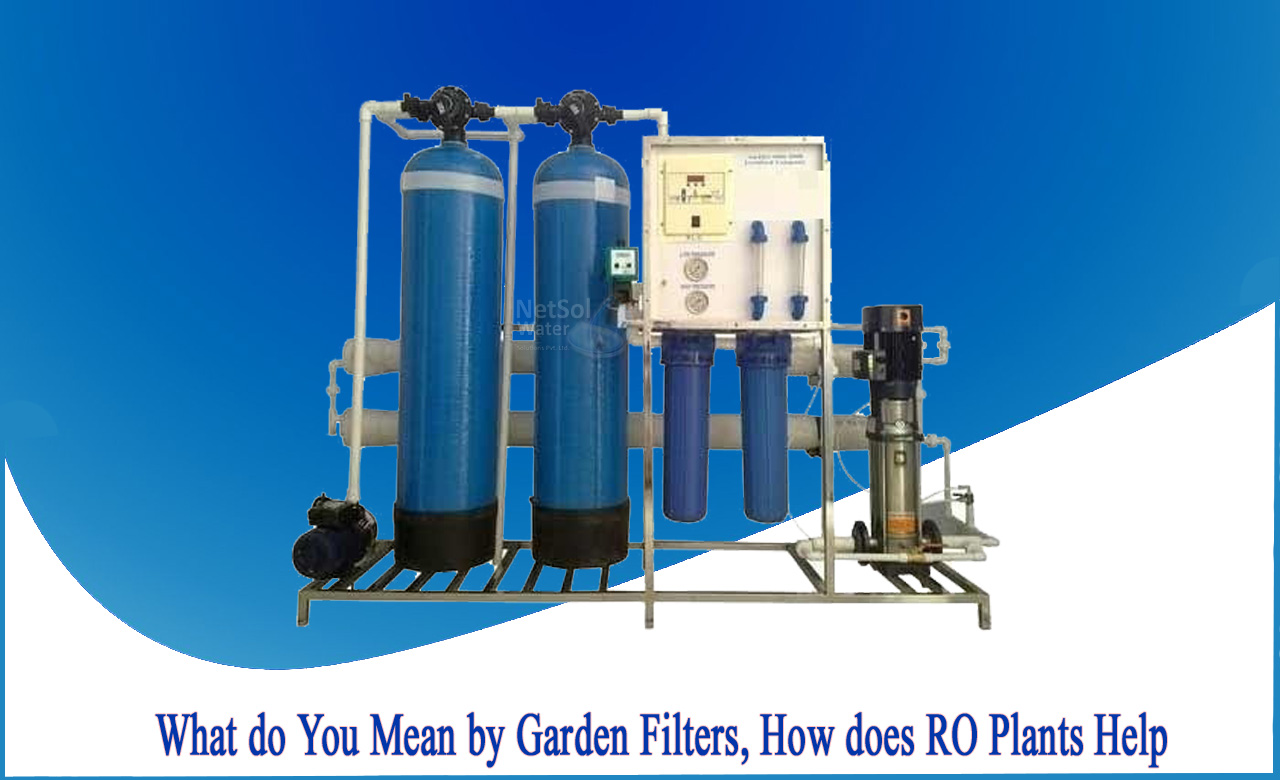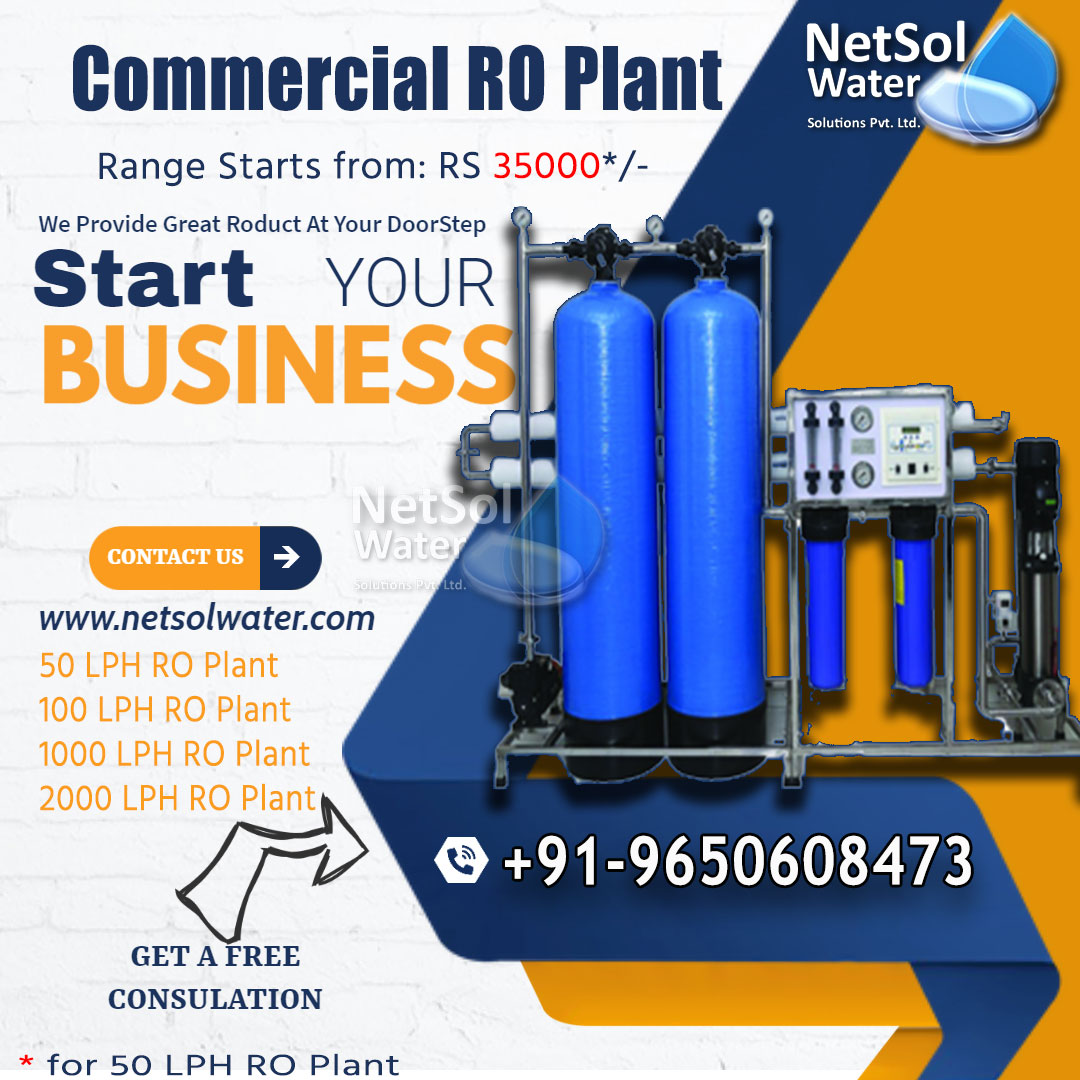What do you mean by garden filters? How does Commercial RO plants help?
We are all aware of the importance of clean water for our plants and gardens. Many people use bore-well water, municipal water, or grey waste water for irrigation. Unfortunately, well water is extremely hard and frequently contains extremely high levels of salt, causing plants and grass to die. These impurities in water are harsh on plants, resulting in high maintenance costs.
To solve this issue, you must avoid contaminants and blockages so that water can be transported as planned and your grass and plants remain healthy.A variety of garden filters are ideal for filtering water with high sand loads.
The function of a filter in your water garden is straightforward: It keeps the water clear and debris-free. Because a filter requires water to be pulled or pushed through it, nearly all water garden filters work in tandem with a pump. Some pumps come with built-in filters. Some pumps necessitate the purchase of a separate filter. Additionally, larger water gardens may necessitate the use of more than one filter to keep the water clear and healthy for fish. Fish, just like in an aquarium, produce a large amount of waste that pollutes the water if not removed by a filter or plants.
There are various types of filters:
1-Prefilters
A prefilter does exactly what it says on the tin: A filter that removes debris before ("pre") the pump to prevent plant and algae fragments from clogging the pump. Prefilters are frequently integrated into the pump. It could be a piece of foam that fits onto the pump's end. It could also be a slatted Snap-On encasement. With larger pumps, it could be a separate mechanism that sits alongside the pump and is connected by tubing.
2-Mechanical filters
This type of filter is essentially nothing more than a very good strainer. The pump pushes or pulls water through it. To catch particles in the water, mechanical filters can be made of foam, netting, grates, or screening. Mechanical filters must be rinsed on a regular basis.Depending on the size of your water garden, the filter, and the type of water garden you have, this can be done every few days or only a few times during the growing season. Cleaning it usually consists of simply lifting it out of the pond, snapping it apart, and giving it a good hard spray with the garden hose. The most common type of mechanical filter used with smaller pumps is about the size and shape of a shoebox. It has foam layers to filter out debris and a lid with many small holes or slats to filter out larger pieces before they are pulled through the foam.
3-Biological filters
While prefilters and mechanical filters remove physical bits and clumps from the water, biological filters keep the water clear and healthy by housing beneficial bacteria. Biological filters are available in a variety of styles.Most are made up of a plastic, rock, or ceramic media in which the beneficial bacteria live, often held together in a mesh bag. Enzymes may also be present in biological filters. Biological filters are kept somewhere in the pond, usually in the small pool (also known as a weir) at the base of a waterfall. The water is dispersed through the water feature after passing through the biological filter. Biological filters, like other filters, must be cleaned. Depending on the circumstances, this could be once a month or once a year.
4-Clarifiers or UV filters
A UV filter is a high-tech way to keep water clear. These are typically packaged in a tube-like container with an ultraviolet light. The container can be placed in the pond or alongside it, with tubing feeding water to it. The container is pulled or pushed by water. Single-cell organisms that cause problems in the water include algae, fish parasites, and harmful bacteria. The organisms are exposed to UV light as the water flows into the container, and their DNA is altered. They then exit the container and return to the pool or pond, where they die. UV clarifiers are particularly effective at controlling floating algae.
5-Skimmers
These are popular tub-style filters that are placed alongside a pond. Their lip is positioned just below the water's surface, allowing water to constantly flow into them. The water then flows through a grate or strainer that collects leaves and other large debris before returning to the pond. Then you lift out the grate or strainer and easily remove the leaves and debris by opening the lid of the strainer (often made of grey plastic to resemble a flat, rectangular rock).
How does Comercial RO plants help?
Commercial RO Plant water can also be used to water your plants and keep your terrace garden blooming for avid horticulturists. Though the concept has its detractors, there are a significant number of users who rely on this water for their plants. This is especially true in urban areas where the TDS content of the water is lower.
It is, however, prudent to monitor the water quality and its impact on all of your plants. To test, use the water on each variety for a few days. This will also help you determine which plants are more tolerant of hard water.
Contact Netsol Water for more information!




